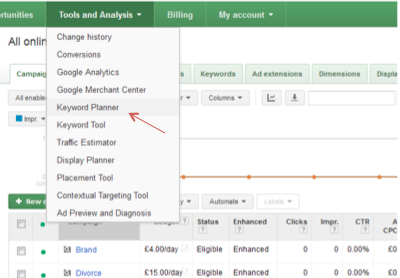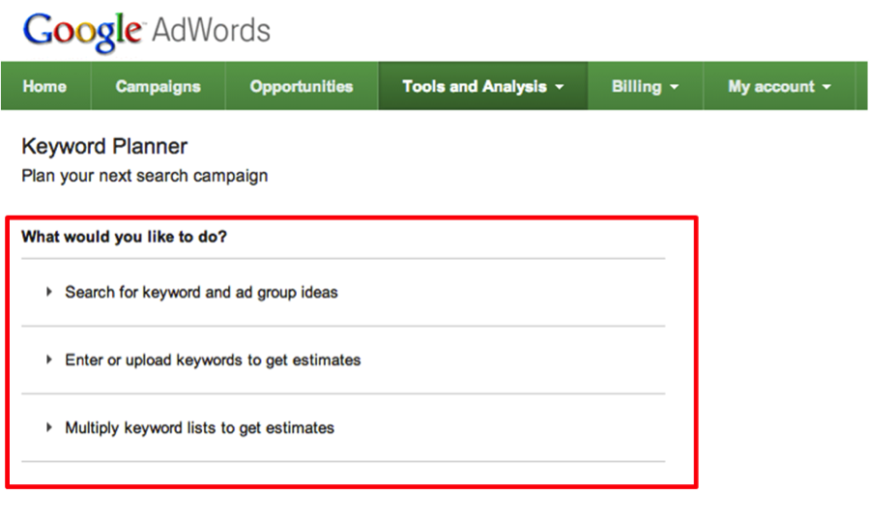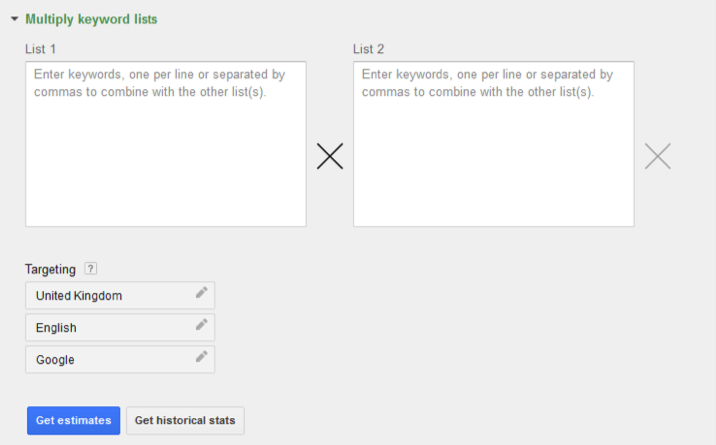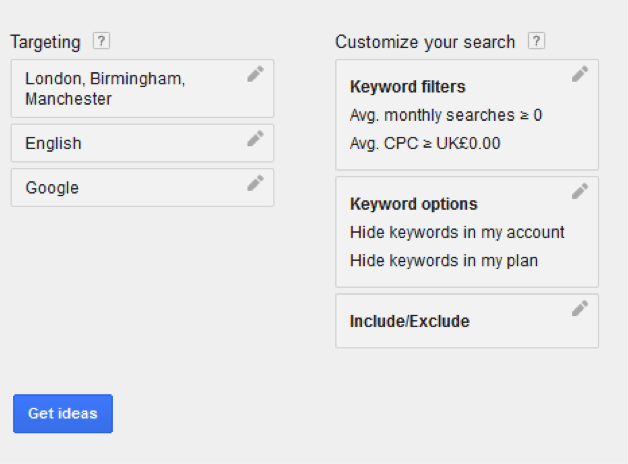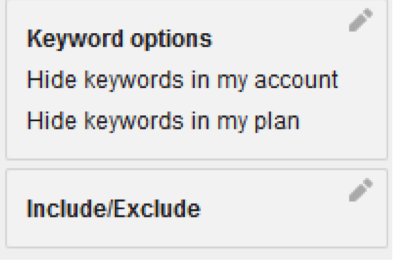Today’s post comes from PPC Hero Ally Hayley Coutinho. Hayley is a Paid Search Consultant at Receptional, one of the UK’s longest running digital marketing agencies. On a day to day basis, Hayley is the manager of various client accounts, both small and large scale, across several industries.
—
Google recently rolled out the Keyword Planner tool and despite it going relatively unnoticed, it is in fact a huge update to the Google Keyword Tool that we have become so familiar with over the years.
Previously the ‘Keyword Tool’ and ‘Traffic Estimator’ could be used by advertisers when initially setting up new AdWords accounts to identify estimated bids, search volumes or research new keyword areas.
Both tools are very useful in their own right, however Google has replaced them with the Keyword Planner which improves usability by combining these features. This seems to be a logical move to me but I am left wondering if the new tool will meet all of my requirements and is it any good?
What’s different about the new tool?
The interface
The new ‘Keyword Planner’ now integrates the key elements of the two preceding tools into one slick and more manageable interface. This new interface feels more like a one stop shop for campaign creation, the way keyword suggestions, traffic estimations and bid/budget predictions work together is much more cohesive and the simple step by step process makes adding new ad groups to your account effortless.
Below is a screenshot of the Keyword Planner welcome page:
Multiply keyword lists
This is a new feature of the ‘Keyword Planner’ that wasn’t available on previous tools. It basically allows you to multiply your keyword lists with one another, resulting in a list of unique combinations derived from your existing keywords. A tool like this could potentially be very useful to find and test new keywords in a large Adwords account where you may have thought you had exhausted all avenues of testing.
Location settings
One of the most welcome changes with the new planner for me is the introduction of more control over location targeting. Previously we could only target at country level which was often frustrating when you were trying to make projections for a client who operates locally. Thankfully this has now changed and you can enter towns and cities for more accurate estimations. This increased control will be particularly beneficial for clients who want to advertise on a geographical basis as we will now be able to gain more accurate search volume information to base geographic strategies upon. It will also be easier to identify ‘hot spots’ where search volume is higher or cheaper for particular search terms.
Device settings
The estimates given by the new planner are now based on all devices in a move which is consistent with Enhanced Campaigns. Previously you could filter results by device to get an estimation of mobile traffic; this is no longer an option as all data is grouped, which will explain discrepancies you may see between the estimations shown on the old and new tool.
Match types
Keyword Planner now shows all keyword data and predictions based on ‘exact match’ as opposed to the previously used ‘broad match’. This means the data you see within the tool is based on the keyword you have entered in its exact stat. Previously however, Googles data was linked to ‘broad match’ meaning variants of your entered keyword would have been included in the resultant data. So if you are wondering why the ‘estimated searches’ Google predicts differ so much between the old and new tool, that will be why!
You can still change the match type if you wish, however this can now only be done once you have added keywords to your planner and clicked on ‘review estimates’. You will then be able to see estimates based on your selected match type and expected bid; leading to more accurate estimations.
Exclusions
The new Keyword Planner has a useful addition to its keyword filtering options; you can now exclude keywords from being suggested if they are already in your account or if you have added them to your planner. This could be particularly beneficial when managing a large account with hundreds of thousands of keywords to ensure you are not duplicating targeted keywords.
As you can see from the screenshot below the ‘include/exclude’ filtering option that was present on the Keyword Tool remains in place so you can still filter in/out particular phrases as you see fit.
Cost per click (CPC) estimates
I often found the ‘approximate CPC’ column in the old Keyword Tool to be inaccurate and would always take the data with a pinch of salt. However, having briefly tested a few existing keywords in the new tool I did find the ‘CPC estimate’ column to be more accurate and consistent with what I was actually paying.
The new tool is more accurate because it differs in the way it works out the CPC estimation. It now takes into account the suggested bid you have input. Previously, the Keyword Tool would just look at the average CPC across all ad positions so you could not enter a suggested bid and this would have no bearing on estimations. This led to a ‘one size fits all’ type of estimation that could not be relied upon.
If you have yet to use the new ‘Keyword Planner’ and would like to see for yourself you should be able to find it within the ‘Tools & Analysis’ tab within you Adwords account. Unlike the previous Keyword Tool you now need to be logged in to access it – so there’s another change for you!
As PPC Account Managers, we spend the majority of our time matching the most profitable and relevant keywords to our clients’ campaigns – and without sounding big headed, we get it right so a new update doesn’t faze us or our work.



